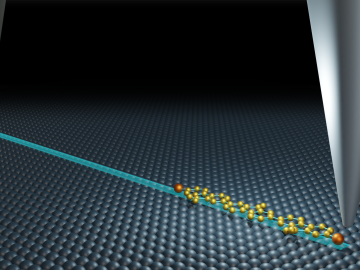
Filter News
Area of Research
- Advanced Manufacturing (8)
- Biological Systems (2)
- Biology and Environment (55)
- Computer Science (2)
- Electricity and Smart Grid (3)
- Energy Science (72)
- Functional Materials for Energy (1)
- Fusion and Fission (6)
- Fusion Energy (3)
- Isotopes (2)
- Materials (72)
- Materials Characterization (1)
- Materials for Computing (15)
- Materials Under Extremes (1)
- National Security (12)
- Neutron Science (21)
- Nuclear Science and Technology (3)
- Quantum information Science (2)
- Sensors and Controls (1)
- Supercomputing (39)
- Transportation Systems (1)
News Type
News Topics
- (-) Bioenergy (90)
- (-) Composites (25)
- (-) Frontier (48)
- (-) Grid (57)
- (-) Materials Science (109)
- (-) Mercury (10)
- (-) Physics (44)
- 3-D Printing/Advanced Manufacturing (106)
- Advanced Reactors (30)
- Artificial Intelligence (100)
- Big Data (66)
- Biology (106)
- Biomedical (57)
- Biotechnology (28)
- Buildings (57)
- Chemical Sciences (59)
- Clean Water (30)
- Computer Science (169)
- Coronavirus (34)
- Critical Materials (18)
- Cybersecurity (23)
- Education (2)
- Emergency (4)
- Energy Storage (79)
- Environment (178)
- Exascale Computing (54)
- Fossil Energy (7)
- Fusion (56)
- High-Performance Computing (104)
- Hydropower (12)
- Irradiation (3)
- Isotopes (46)
- ITER (8)
- Machine Learning (53)
- Materials (118)
- Mathematics (11)
- Microelectronics (3)
- Microscopy (42)
- Molten Salt (8)
- Nanotechnology (41)
- National Security (70)
- Neutron Science (122)
- Nuclear Energy (98)
- Partnerships (43)
- Polymers (23)
- Quantum Computing (41)
- Quantum Science (62)
- Security (20)
- Simulation (55)
- Software (1)
- Space Exploration (24)
- Statistics (3)
- Summit (50)
- Transportation (77)
Media Contacts

Since the 1930s, scientists have been using particle accelerators to gain insights into the structure of matter and the laws of physics that govern our world.


Oak Ridge National Laboratory’s Center for Nanophase Materials Sciences contributed to a groundbreaking experiment published in Science that tracks the real-time transport of individual molecules.

Marcel Demarteau is director of the Physics Division at the Department of Energy’s Oak Ridge National Laboratory. For topics from nuclear structure to astrophysics, he shapes ORNL’s physics research agenda.

Six scientists at the Department of Energy’s Oak Ridge National Laboratory were named Battelle Distinguished Inventors, in recognition of obtaining 14 or more patents during their careers at the lab.

As ORNL’s fuel properties technical lead for the U.S. Department of Energy’s Co-Optimization of Fuel and Engines, or Co-Optima, initiative, Jim Szybist has been on a quest for the past few years to identify the most significant indicators for predicting how a fuel will perform in engines designed for light-duty vehicles such as passenger cars and pickup trucks.

Six ORNL scientists have been elected as fellows to the American Association for the Advancement of Science, or AAAS.

Seven ORNL scientists have been named among the 2020 Highly Cited Researchers list, according to Clarivate, a data analytics firm that specializes in scientific and academic research.

Pauling’s Rules is the standard model used to describe atomic arrangements in ordered materials. Neutron scattering experiments at Oak Ridge National Laboratory confirmed this approach can also be used to describe highly disordered materials.

Planning for a digitized, sustainable smart power grid is a challenge to which Suman Debnath is using not only his own applied mathematics expertise, but also the wider communal knowledge made possible by his revival of a local chapter of the IEEE professional society.


